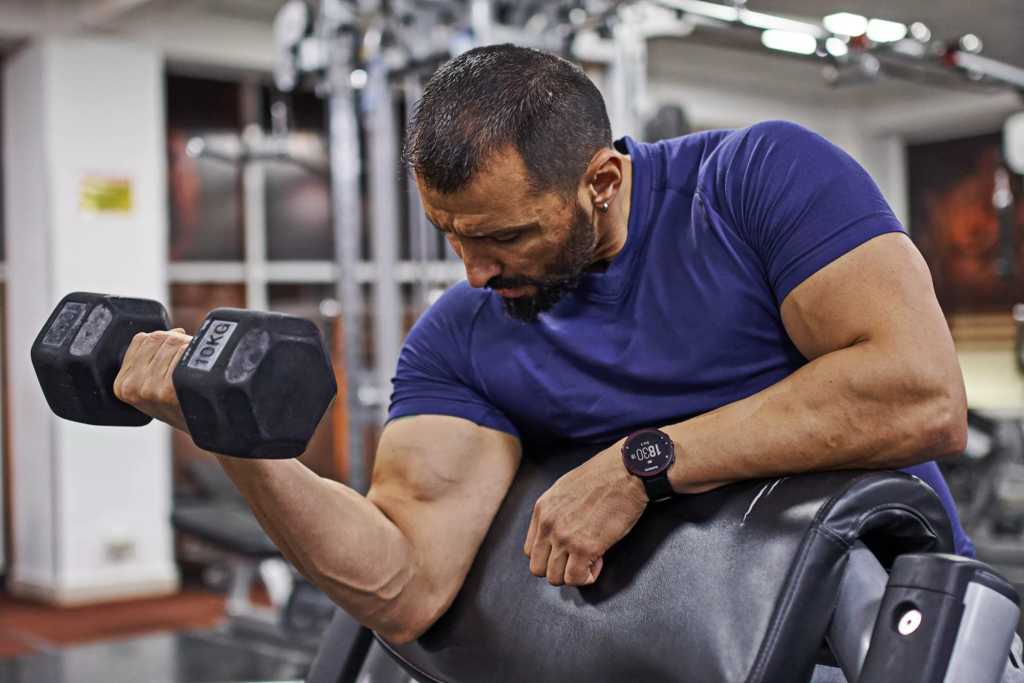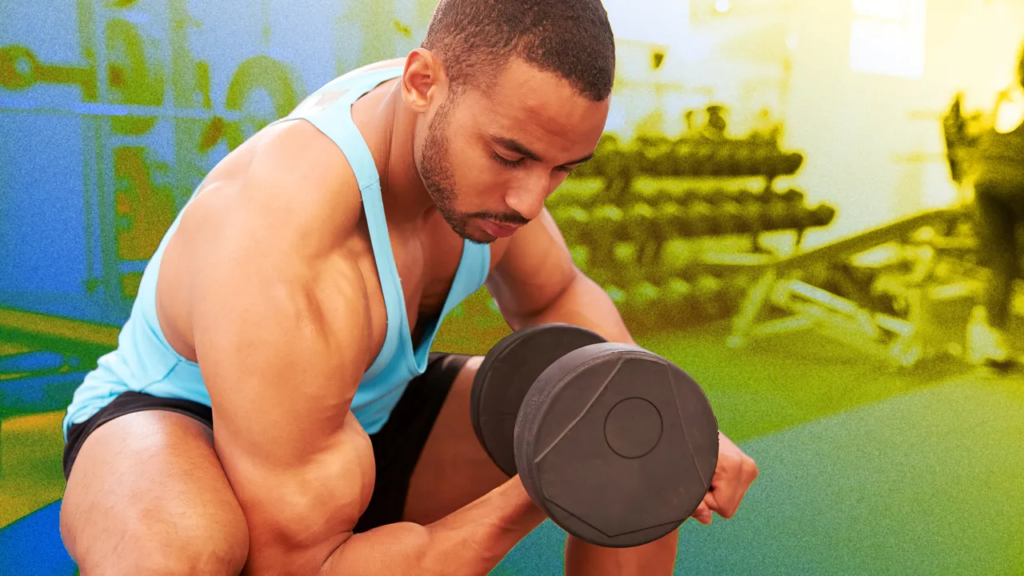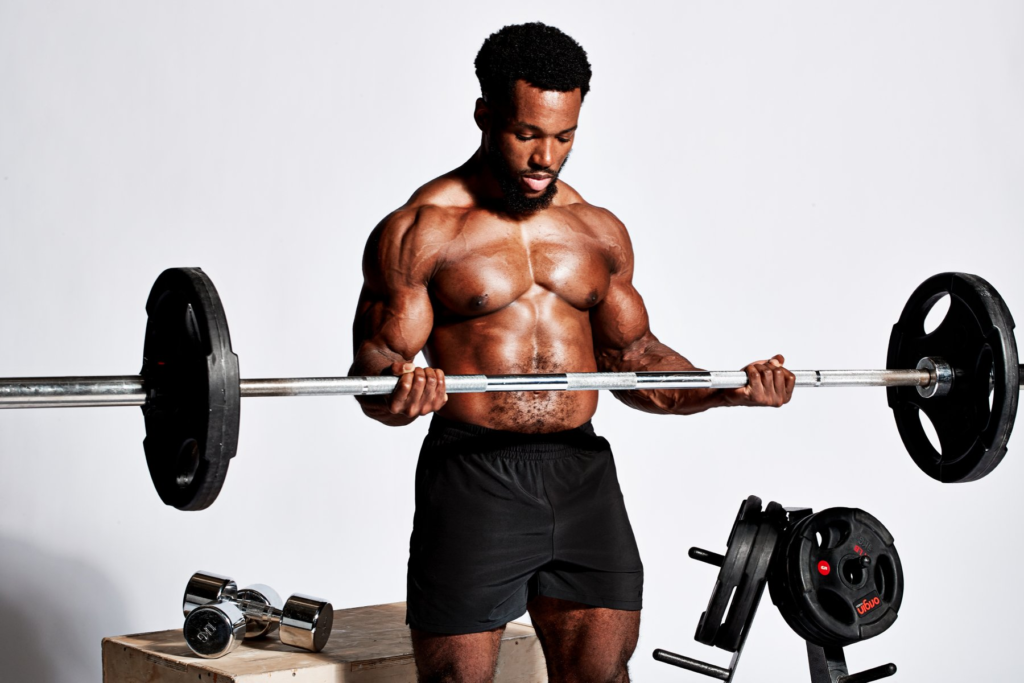
Are you looking to sculpt those impressive biceps that turn heads at the gym? The biceps curl is a classic exercise that not only showcases your strength but also plays a vital role in building your upper arm muscles. Mastering this straightforward yet effective move can elevate your fitness game, whether you’re a beginner or an experienced lifter. With the right form and technique, you’ll maximize gains while minimizing injury risk.
This guide will walk you through everything you need to know about the biceps curl—from proper execution to common pitfalls to avoid. Plus, we’ll explore various curl variations and how they can spice up your arm workout routine. Get ready to unleash your inner athlete and achieve those muscle-building goals!
Understanding the Biceps Curl Exercise
The biceps curl is a foundational exercise in strength training, focusing primarily on the biceps brachii. This muscle, located at the front of your upper arm, plays a crucial role in elbow flexion and forearm rotation.
When performing this exercise, you’re not just isolating the biceps; you’re also engaging your shoulders and core for stability. The simplicity of the movement makes it accessible to everyone, from gym novices to seasoned athletes.
Biceps curls can be performed with various equipment—dumbbells, barbells, or resistance bands—allowing for flexibility in your workout routine. Each method targets the muscles slightly differently but retains that essential focus on building strength and mass in your arms.
Incorporating this classic move into your fitness regimen helps enhance both aesthetics and functional strength. Understanding its mechanics will set you up for success as you dive deeper into effective arm workouts.
Proper Form and Technique for a Perfect Biceps Curl
To master the biceps curl, start by selecting an appropriate weight. Choose a dumbbell that challenges you but allows for controlled movements.
Stand tall with your feet hip-width apart. Keep your core engaged and shoulders relaxed. Hold the dumbbells at your sides with palms facing forward.
As you begin the curl, keep your elbows close to your body. This isolation targets the biceps effectively. Lift the weights slowly, focusing on squeezing the muscle at the top of each repetition.
Lower them back down in a controlled manner without letting gravity take over. Maintain smooth motion throughout—no swinging or jerking!
Breathing is crucial; exhale while lifting and inhale as you lower back down. With consistent practice and attention to form, you’ll maximize results from this classic strength training exercise.

Common Mistakes to Avoid
When it comes to the biceps curl, small mistakes can hinder your progress.
– One common error is using too much weight. This often leads to poor form and increases the risk of injury. Start light to master your technique before adding more resistance.
– Another frequent mistake is swinging the weights. This not only takes the focus off your biceps but can also strain other muscles. Keep movements controlled for optimal results.
– Neglecting a full range of motion is another pitfall. Ensure you fully extend and contract your arms throughout each repetition. It maximizes muscle engagement and fosters better growth.
– Don’t forget about rest periods between sets. Rushing through without adequate recovery can compromise performance and lead to burnout over time. Listening to your body is crucial in any strength training regimen.
Variations of the Biceps Curl Exercise
Biceps curls are versatile and can be adapted to keep your workouts fresh. One popular variation is the hammer curl. This technique targets not only the biceps but also engages the forearms effectively.
Another engaging option is the concentration curl, where you isolate each arm while seated. This helps to build peak muscle definition by focusing on one side at a time.
For those looking for a bit more challenge, try the Zottman curl. It combines both traditional and reverse curls in one movement, maximizing muscle engagement throughout your arms.
Resistance bands offer an alternative approach with banded bicep curls. They provide constant tension and enhance stability during exercise.
Incorporating alternating dumbbell curls adds variety and allows for better control over each rep while promoting balanced strength development across both arms. Each of these variations will help elevate your arm workout routine significantly!

Benefits of Including Biceps Curls in Your Workout Routine
Biceps curls are a staple in any strength training routine. They specifically target the biceps brachii, helping to build muscle mass and improve overall arm strength.
Incorporating this exercise can enhance your grip, which benefits various functional tasks. Stronger arms translate into better performance in other lifts too, making it a key component of comprehensive workout plans.
Additionally, biceps curls contribute to muscular symmetry and aesthetics. Well-defined biceps create an appealing physique that many strive for during their fitness journey.
These exercises are versatile as well; you can perform them with dumbbells, barbells, or resistance bands. This variety keeps your workouts fresh and engaging while targeting muscles from different angles.
Including biceps curls promotes joint stability in the elbows. A strong foundation leads to improved performance across all fitness activities you engage in.
Combining Biceps Curls with Other Exercises for Maximum Results
Combining biceps curls with other exercises can elevate your arm workout to new heights. Pairing them with compound movements like bench presses or rows engages multiple muscle groups, enhancing overall strength and promoting balanced development.
Supersetting is another effective strategy. Alternate between biceps curls and tricep extensions for an intense pump that maximizes muscle fatigue. This method not only saves time but also boosts metabolic rate during workouts.
Incorporating variations such as hammer curls or concentration curls adds diversity, preventing plateaus while targeting different parts of the bicep. Don’t forget about core stability! Integrate planks or abdominal exercises into your routine for well-rounded fitness benefits.
Remember to listen to your body as you mix various techniques. Finding the right combination will keep your workouts fresh and motivating, ultimately leading to better results in muscle building and strength training efforts.

Tips for Beginners and Advanced Lifters
When starting with biceps curls, focus on mastering the basics. Use a lighter weight to ensure you can maintain proper form throughout the exercise. This will help build a strong foundation without risking injury.
For beginners, practice slow and controlled movements. Pay attention to your breathing—exhale during the lift and inhale while lowering the weights. This rhythm enhances muscle engagement.
Advanced lifters should consider incorporating supersets or drop sets for added intensity. Mixing in different variations keeps your workouts fresh and challenging.
Experimenting with grip changes—such as hammer grips or reverse grips—can stimulate different muscle fibers, promoting growth and strength gains.
Listening to your body is crucial at any level. If you’re feeling fatigued or experience pain beyond typical soreness, it’s time to reassess your technique or take a break from heavy lifting.
Conclusion
The biceps curl is a fundamental exercise that can bring impressive results when performed correctly. Mastering the proper form and technique is crucial for maximizing gains while minimizing the risk of injury. By avoiding common mistakes and incorporating various curl variations, you keep your workouts fresh and challenging.
Adding biceps curls to your routine not only enhances muscle building but also improves overall arm strength. It’s beneficial to combine these curls with other exercises, creating a balanced workout that targets multiple muscle groups effectively.
For beginners, starting slowly and focusing on form is essential. Advanced lifters can explore more complex variations to elevate their training intensity. Emphasizing fitness tips tailored to your level will lead to better progress over time.
With the right approach, biceps curls can become a staple in any strength training regimen that aims for well-defined arms and improved upper body performance. So grab those weights, focus on your technique, and enjoy the journey toward stronger biceps!
For more such content, keep visiting QAWire


